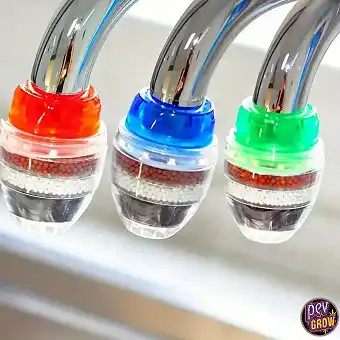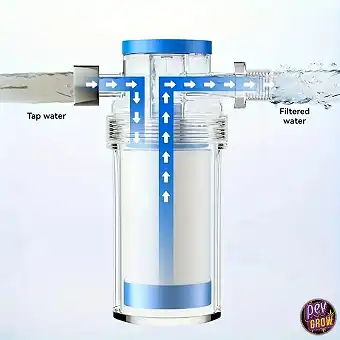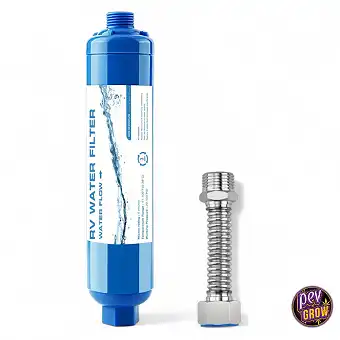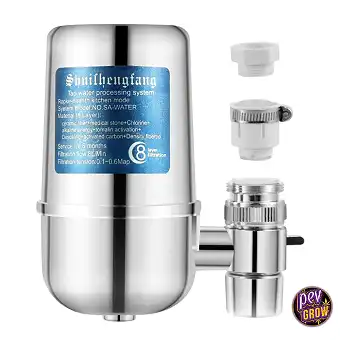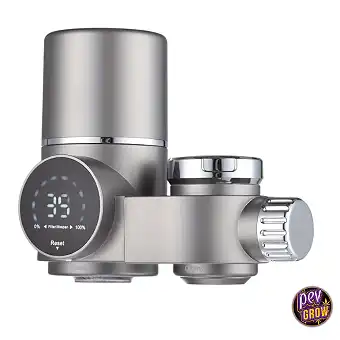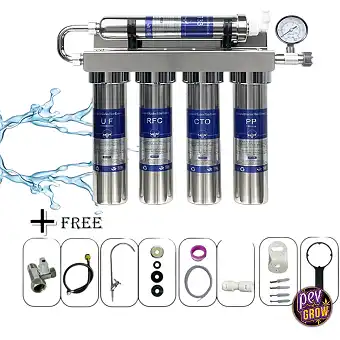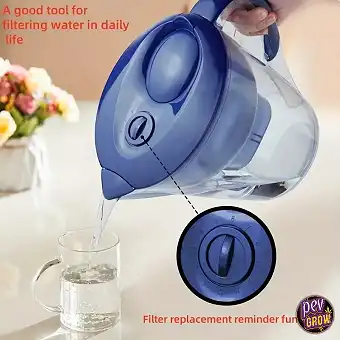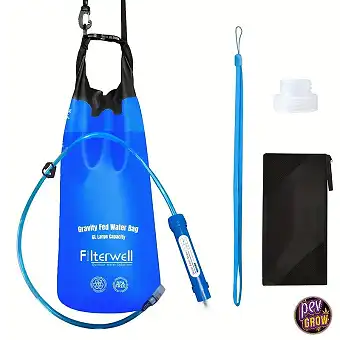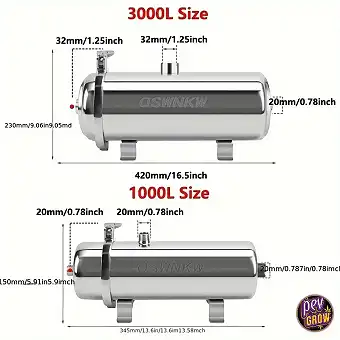Water Purifiers
On this page, you will see how to choose between reverse osmosis, sediment filters, activated carbon, and water softening, as well as their integration with drip irrigation. We include a sizing guide, preventive maintenance, FAQs, and links to the main categories of Pevgrow to complete your installation.
Water purifiers of high performance are the heart of modern irrigation water treatment: they stabilize pH and EC, reduce TDS, and prevent blockages. With them, you achieve repeatable fertilization recipes and more uniform plants, both in soil and in coco or hydroponics.
Why are water purifiers crucial in irrigation water treatment?
Water is the vehicle for nutrients. If you feed it with an appropriate water purifier, you reduce TDS, stabilize pH, and start from a predictable EC base, which translates into fewer blockages in the rhizosphere and greater assimilation efficiency. Additionally, clean water minimizes precipitates, biofilm, and scale in drippers, pumps, and valves, preventing flow losses that ruin crop uniformity.
Whether you water by hand or use drip irrigation or recirculating circuits, good irrigation water treatment turns every task into a measurable and repeatable process. This is vital when working with concentrated fertilizers, mycorrhizae, or beneficial biology that requires reducing chlorine and contaminants.
Key benefits of using water purifiers in cultivation
- Precise nutrition: with a known EC base, you adjust the recipe without hidden inertia.
- pH stability: fewer fluctuations = fewer blockages and apparent deficiencies.
- Irrigation uniformity: constant flows and comparable drains between plants.
- Less maintenance: prevents scaling and extends the life of drippers and pumps.
- Organoleptic quality: eliminating chlorine/odor improves flavor and health of the root system.
Types of water purifiers and when to choose each one
- Sediment filter (5–20 μm): first barrier against sand, rust, and particles. Essential before pumps and drippers.
- Activated carbon filter: reduces chlorine, odors, and organic compounds; key if you work with Trichoderma and mycorrhizae.
- Reverse osmosis (RO): drastically lowers TDS to "start from scratch." Ideal for preparing exact solutions with Cal-Mag and fertilizers.
- Descaling/anti-scale: useful in hard waters when RO is not installed; reduces carbonate precipitation.
- UV/sterilization (optional): helps control microbial load in tanks and closed circuits.
The most common combination is sediments + carbon as pre-treatment and reverse osmosis when hardness or network TDS is high or you seek maximum reproducibility in irrigation water treatment.
How to size your system: flow, rejection, and pressure
Calculate daily demand: number of plants × liters per watering × waterings/day. With that data, choose a water purifier (or set) that produces the necessary volume without bottlenecks. In RO, check production (L/day), rejection ratio, and minimum pressure; systems with a booster pump perform better in homes with low pressure.
If you work with a tank, install a sediment pre-filter before the pump and a fine filter at the outlet to the dripper collector. Keep the tank covered, use opaque hoses, and regularly measure EC/TDS to know when to change consumables.
Integration with drip irrigation, coco, and hydroponics
Recommended flow: network → sediments → activated carbon → reverse osmosis (if applicable) → tank → pump → fine filter → collector → drippers. With RO, set a base EC (e.g., 0.2–0.4 mS/cm with Cal-Mag) and from there add your growth or flowering program. In coco substrate and frequent fertigation, purified water prevents precipitates and keeps drains stable.
Organic cultivation? Filter as well. Reducing chlorine and particles improves soil life and reduces blockages in lines, without compromising the biological activity of the substrate.
Preventive maintenance and common mistakes
Change sediments every 3–6 months (depending on turbidity), carbon every 6–12 months, and check the reverse osmosis membrane when the output TDS rises. Avoid leaving the tank uncovered, purge lines periodically, and do not mix concentrated fertilizers without agitating/oxygenating the tank. If you notice a drop in flow or abnormal drains, first check filters and pH/EC.
FAQ about water purifiers in irrigation water treatment
Do I need reverse osmosis or is sediment and carbon filters enough?
It depends on your tap water. If the TDS/hardness is high or you seek maximum reproducibility, install RO; with moderate TDS, often sediments + carbon is sufficient.
How often should I change the consumables?
As a guide: sediments 3–6 months, carbon 6–12 months, RO membrane according to the rise in output TDS. Confirm with EC/TDS meter.
Does RO remove chlorine and chloramines?
The membrane helps, but the one that really works against chlorine/chloramines is the activated carbon. Use it as pre-treatment for sure.
How do I prevent drippers from clogging?
Filter at the inlet and outlet of the tank, cover the tank, use opaque hoses, and perform periodic purges. Avoid residues and algae in lines.
Can I water with "pure" RO water without remineralizing?
It is not recommended. Start from a low base EC (adding Cal-Mag if applicable) and then incorporate your fertilizers up to the target recipe.
Conclusion: clean water, stable irrigation, and predictable harvests
Integrating water purifiers into your irrigation water treatment is moving from intuition to data. With the tandem sediments + carbon and, when analysis requires it, reverse osmosis, your setup gains uniformity, your plants express their full potential, and you manage with professional precision.
Complete your system with fertilizers, cabinets, lights, and substrates from Pevgrow, and enjoy a coherent setup from start to finish. Clear water, clear decisions.
Among all of you who comment or send us your questions there will be a bimonthly draw for a 50 euros voucher to buy in Pevgrow. What are you waiting for? Write now and participate!




